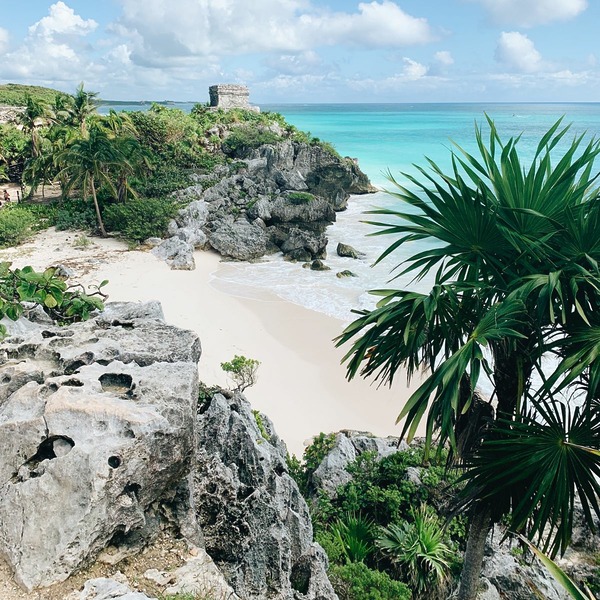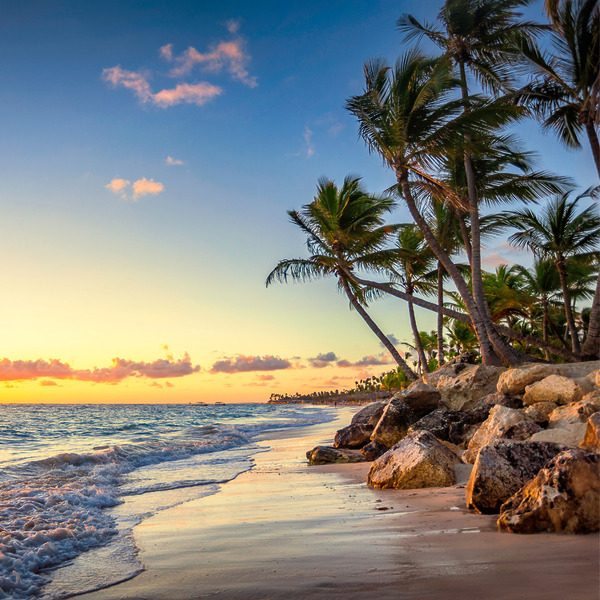Table of contents
- 0.1 1. Welcome Message That Sets the Tone
- 0.2 2. Detailed Wedding Itinerary
- 0.3 3. Travel and Flight Information
- 0.4 4. Hotel and Resort Accommodations
- 0.5 5. Dress Code and Packing Tips
- 0.6 6. RSVP and Guest Contact Section
- 0.7 7. Local Attractions and Excursions
- 0.8 8. FAQ Section for Guests
- 0.9 9. Final Details and Contact Info
- 1 A Wedding Website That Brings Everyone Together
Your destination wedding website is the go-to place for everything your guests need to know. It answers questions before they’re asked, helps everyone plan their travel, and sets the tone for your big day. A great site keeps things simple, stylish, and easy to use.
From welcome messages to RSVP forms, here are the most important features your destination wedding website needs.

In this blog, we’ll cover 9 destination wedding website tips to help you build a site that works, full of helpful wedding guest resources. You’ll learn what details to include, how to organize them, and where to add those personal touches your guests will appreciate.
Ready to get started? Here’s what to include to make your wedding website complete.
1. Welcome Message That Sets the Tone
Your wedding website should begin with a warm, clear welcome message. This is your chance to greet your guests, thank them for being part of your celebration, and give them a quick preview of what to expect.
Keep it short and upbeat. A few sentences about how excited you are, where you’ll be celebrating, and what kind of vibe you’re going for is all you need. For example, “We’re so excited to celebrate in Cabo with our favorite people—sun, sand, and good times await!”
This section doesn’t need to go into too much detail (that’s what the rest of your site is for), but it does help set the tone and show your personality. If your wedding has a theme, like beach chic or garden party glam, this is also a good place to hint at it.
A thoughtful welcome message makes your destination wedding website feel personal from the very start. It reassures your guests that everything they need to know is right here.
2. Detailed Wedding Itinerary
Once guests book their trip, their first question is often about the plan. A clear itinerary sets the tone, keeps everyone on the same page, and helps guests get excited about what’s ahead.
Use your wedding website to outline each event in your destination celebration. Start with your welcome dinner or cocktail hour, move into your ceremony and reception details, and include any group excursions or farewell brunches. Don’t forget to list the time, date, and location for each one. Guests should be able to pull it up quickly and know exactly where they need to be and when.
This is also where you can add any helpful notes, like transportation details, or whether an event is optional. Even simple guidelines like “meet in the lobby at 4 PM” go a long way in keeping things smooth.
A great itinerary helps build anticipation and makes guests feel like part of the experience from the moment they arrive, so keep it warm, clear, and guest-focused. If there’s room, add a quick note at the top to welcome everyone and share how excited you are to celebrate together. It’s a thoughtful touch that makes your website feel personal.
3. Travel and Flight Information
Once the invitations are out, guests will turn to your destination wedding website to figure out how to get there. Make it easy for them by supplying all the travel details in one place.
Start with the nearest international airport and any transfer recommendations, whether that’s resort-arranged shuttles, local taxis, or preferred ride-share apps. It also helps to suggest ideal arrival and departure windows, especially if your events span several days. For example: “We recommend arriving by Thursday afternoon to settle in before the welcome dinner on Friday night.”
If your destination requires a passport or tourist visa, add that information clearly. You can also mention customs tips or anything specific they should expect when landing (like airport pick-up points or signage). Consider linking to an official tourism page or a reliable travel resource like the TSA’s travel checklist to help guests prepare.
This is one of the most practical pages on your site, so keep it straightforward and up to date. A smooth arrival sets the tone for a stress-free stay, and the fewer questions your guests have before they fly, the better the experience for everyone.
4. Hotel and Resort Accommodations
Your guests want to know how to book and where they’ll be staying. One of the most useful features of the best destination wedding websites is a clear breakdown of hotel and resort options. If you’ve arranged a room block, include all the essential details: name of the resort, available room types, group rate, booking deadline, and how to reserve. A direct booking link or reservation code is especially helpful.
It’s also worth sharing what guests can expect from the destination wedding resort. Is it all-inclusive? Are meals, drinks, and airport transfers included? A short summary helps them understand the value and make informed decisions. If the resort offers different room categories, highlight the differences so guests can choose what suits them best, whether that’s a beachfront suite or a garden-view room.

5. Dress Code and Packing Tips
Guests will be grateful for clear guidance on what to wear and what to bring. Your destination wedding website tips should include dress codes for each event on the itinerary, from resort casual for the welcome dinner, to cocktail attire for the ceremony, to breezy linens for a sunset reception on the beach.
Since destination weddings often come with unfamiliar climates and terrain, help your guests feel prepared with a detailed wedding guest attire section. Let them know if they’ll be walking on sand or grass so they can plan their footwear. If the weather is typically warm and humid, suggest lightweight fabrics. If your celebration includes a rooftop or oceanfront setting, remind them to bring a shawl or wrap for the evening breeze.
This is also a great place to share practical packing suggestions. Sunscreen, bug spray, swimsuits, reusable water bottles, and portable fans are often overlooked but always appreciated. And if you’ve planned any group excursions, like catamaran rides or cenote dips, add a note about bringing activewear or water shoes.
6. RSVP and Guest Contact Section
Every destination wedding website needs a reliable way to track who’s coming. With multiple events and travel involved, timing and accuracy matter more than ever. That’s why one of the most important features is your RSVP form. The best wedding RSVP websites let you collect responses easily and in one place, saving you hours of chasing down emails or messages.
Even if you send classic wedding invitations in the post, include a clearly labeled RSVP section on your site with a direct link or embedded form. Ask for essential info like arrival and departure dates, number of guests, meal preferences, and attendance for each event on your itinerary. If you’re planning optional excursions or private group dinners, this is also the place to gauge interest.
You might also want to include a short guest survey. Ask if anyone has dietary restrictions, mobility needs, or special requests. It’s a simple way to make sure your guests feel seen and supported while giving your resort coordinator helpful planning details.
Finally, add a contact option. Either an email address or a direct message link allows guests to reach out with questions. It’s a small touch, but it makes your wedding website feel warm and welcoming.

7. Local Attractions and Excursions
Your destination wedding website tips should include ideas for how guests can make the most of their trip. Highlight local attractions, optional excursions, and downtime favorites near your chosen resort to help them plan their stay.
If you’re getting married in Punta Cana, suggest a day trip to the Indigenous Eyes Ecological Reserve or a sunset catamaran cruise. Celebrating in Cabo San Lucas? Recommend an afternoon at Medano Beach or a visit to Land’s End. For couples hosting in the Riviera Maya, must-dos include snorkeling in cenotes, exploring the Tulum ruins, or shopping on Playa del Carmen’s Fifth Avenue.
You don’t need to schedule every moment, just point guests toward the best ways to enjoy their free time. Many resorts also offer excursions onsite, which can be added to your itinerary or left as open options.
To help your guests explore confidently, include transportation info, booking links (if available), or resort concierge contact details. This section adds a thoughtful layer to your site and gets guests even more excited for the trip.
8. FAQ Section for Guests
An FAQ section keeps your guests informed and confident as they prepare for your big day. Whether you’re building your site through a paid platform or one of the many free wedding websites available, this is a key feature worth including.
Use this space to answer the questions guests are likely to ask in the weeks leading up to the wedding. What will the weather be like? Do they need to exchange currency? Is tipping expected at the resort? Can they expect strong WiFi? Will they need travel insurance or COVID-related documentation?
You can also cover practical details like the dress code, transportation from the airport, and how to access the RSVP form if they haven’t already filled it out. Even if the answers feel obvious to you, they might not be to someone who has never traveled internationally or never been to a destination wedding before.
Keeping everything in one place helps reduce back-and-forth messaging and helps everyone arrive prepared. A well-organized FAQ section is a sign of a thoughtful host and can be added quickly with a collapsible menu or accordion format to keep the site tidy and user-friendly.
9. Final Details and Contact Info
As the wedding day approaches, guests will appreciate having one place to check for any last-minute updates. The best wedding website for destination wedding planning includes a dedicated section for essential contacts and final reminders.
List emergency contact information first, whether your wedding planner, the lead hotel coordinator, or a point person from your wedding party. These contacts can help handle travel hiccups, room check-ins, or urgent questions while you’re busy soaking in the celebration.
You should also include any updates or time-sensitive notes, like changes to the schedule, weather alerts, or new transportation details. Consider adding a brief message encouraging guests to check the site the day before travel, just in case anything has changed.
This is also a great spot to thank your guests in advance for joining you on such a meaningful journey. A personal note here makes a lasting impression and sets the tone for the incredible memories to come. When everything is easy to access, guests can relax and focus on what matters most: celebrating you.

A Wedding Website That Brings Everyone Together
Your destination wedding website is one of the most important tools in your planning journey. It’s where excitement begins, questions are answered, and guests feel included every step of the way. From flight details to dress codes, each section builds confidence and connection. Whether your guests are traveling across the country or around the world, your website is how they’ll feel part of the experience from the very start. Keep it clear. Keep it you. And most of all, let it set the tone for an unforgettable celebration ahead. Reach out to Destify today to make your destination wedding a reality.







